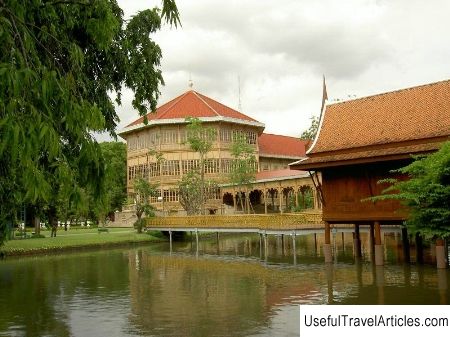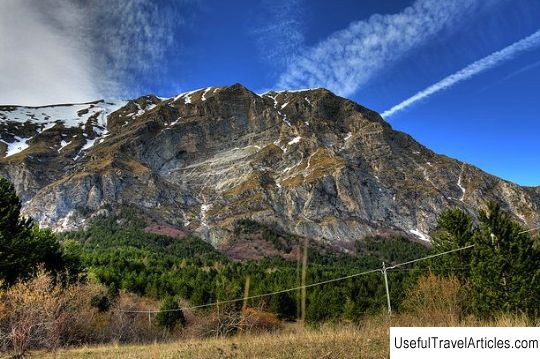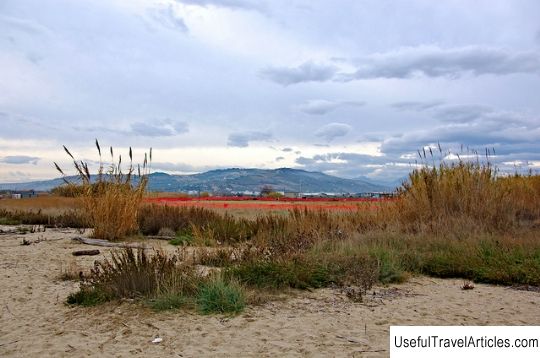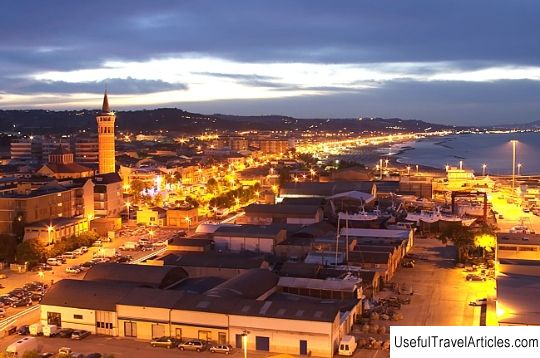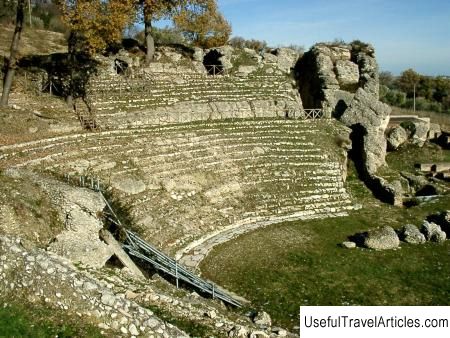Ascoli Piceno description and photos - Italy: Marche
Rating: 8,9/10 (589 votes) 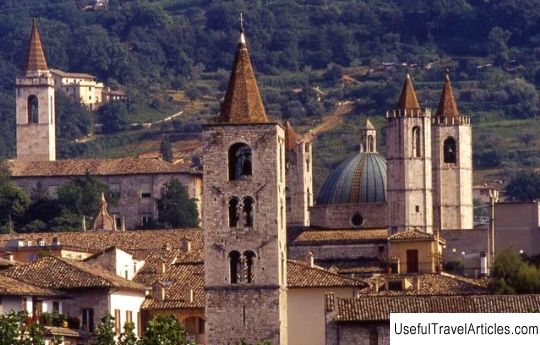
Ascoli Piceno description and photos - Italy: Marche. Detailed information about the attraction. Description, photographs and a map showing the nearest significant objects. The title in English is Ascoli Piceno. Photo and descriptionAscoli Piceno is one of the largest cities in the Italian Marche region, located 25 km from the Adriatic coast. On three sides, the city is surrounded by picturesque hills with romantic names - Mount Ascension (Montana del Ascencione), Saint Mark's Hill (Colle di San Marco), Flower Mountain (Montana dei Fiori). In the northwest is the Mysterious Mountains National Park, and in the south is the Monti della Laga National Park. Ascoli Piceno was founded in ancient times by the Italic Picenos tribes, by whose name it got its name. The city was located on the ancient road, which in the era of ancient Rome was known as Via Salaria, along which salt was transported from the Adriatic coast to the central parts of the country. In 268 BC. Ascoli received the status of "Civitas Foederat" - a federal city with nominal independence from Rome. Two centuries later, along with other cities on the east coast of the Apennine Peninsula, he rebelled against Rome, but was conquered and destroyed. In the Middle Ages, Ascoli Piceno, who rebelled from the ashes, was ravaged first by the Ostrogoths, and then by the Lombards, led by the Duke of Faroald. From 593 to 789 the city was under the rule of the Duchy of Spoleto, then the Franks ruled it, and in the 12th century it came under the rule of the local episcopate, which had a huge influence. In the 12-15th centuries, Ascoli passed from hand to hand - it was owned by the Malatesta and Sforza families, until in 1482 the city became part of the Papal suzerainty, where it remained until the second half of the 19th century - the time of the formation of the Italian Kingdoms. Today Ascoli Piceno attracts tourists with its numerous monuments of history and architecture. The central part of the city is almost entirely built of marble, which is called "travertino" - a gray stone quarried in the surrounding mountains. The main square, made in the Renaissance style, Piazza del Popolo, is considered one of the most beautiful in Italy. According to legend, over two hundred towers were built in Ascoli in the Middle Ages, from which only about 50 have survived to this day. The huge number of religious buildings in the city is striking, each of which is worthy of a separate mention. So, in the Cathedral of Sant'Emidio, there is a magnificent altarpiece by Carlo Crivelli. The Gothic Church of San Francesco, built in the 13th century, It is distinguished by a central portal with elegant decorations and a dome from the middle of the 16th century. Next to this church is the 16th century Loggia dei Mercanti, a fine example of the architecture of the so-called High Renaissance. One of the oldest churches in Ascoli is the Romanesque church of San Vittore - the first mention of it dates back to 996. The 14th century convent of Sant Augustinus today houses the Municipal Library, Gallery of Modern Art and Auditorium, while the San Domenico Convent is notable for its Renaissance cloister with 17th century frescoes. Also worth seeing are the Franciscan monastery with two ancient cloisters, the Church of San Tommaso with priceless works of art and the churches of Sant'Emidio alle Grotte and Sant'Emidio Rosso. Other attractions of Ascoli Piceno include the aristocratic palaces - the 13th century Palazzo dei Capitani del Popolo and the Palazzo del Arengo. Preserved in the city and the ancient gate - Porta Gemina, built in the 1st century BC, and Porta Tufilla of the 16th century. The latter lead to the Ponte Tufilla bridge, built over the Tronto River in the 11th century. The ancient Ponte di Cecco bridge and the medieval Ponte Maggiore have also survived to this day. The city fortresses - Fortezza Pia, built in the 16th century, and Rocca di Malatesta, erected on the ruins of ancient Roman baths, enjoy constant attention of tourists. Finally, it is worth exploring the Edicola, a monumental niche that once housed the image of the Virgin Mary, and the huge portico of the Grotte del Annunziata, dating from the 2nd to 1st centuries BC. The purpose of the latter is still unclear. And in the vicinity of Ascoli Piceno in the town of Castel Trozino, in 1893, a unique Lombard necropolis of the 6th century was discovered.            We also recommend reading Fine Art and Ceramic Museum description and photos - Indonesia: Jakarta Topic: Ascoli Piceno description and photos - Italy: Marche. |
